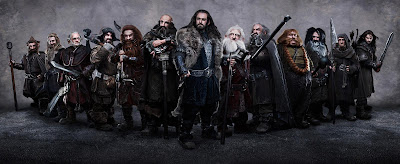1986
Awards: Nebula
Rating: ★ ★ – – –

The Falling Woman is set in Dzibilchaltún, a Mayan archeological site near Mérida, Mexico. The main character is an archeologist, Elizabeth Butler, who can see the ghosts of the ancient Maya working and playing around her - often more realistically than she can see her own live workmen and graduate students.
Butler’s long-estranged daughter, who is going through a sort of a lost period following the death of her father, comes to see her and stays to work on the dig. Both mother and daughter then start to see the ghost of a formidable Mayan priestess who can see them too – and who has unpleasant designs on both of them, including wanting Butler to murder her daughter.
The book is clearly and straightforwardly written, the plot is decently exciting and well paced, and the subject matter certainly has potential. My major gripe with it was that there were so many, many details about both the Maya and the field work that didn’t sit right with me. And when I consulted with some Mesoamerican archeologists of my acquaintance, they confirmed that most of these details were either goofy or just plain wrong.
The first thing that jarred me out of the story’s dreamland ghost story vibe was when Butler, the head of the dig, actually puts her cigarette out on the wall of one of the site’s stone temples. Not only would a burning cigarette accelerate the disintegration of an irreplaceable artifact thousands of years old, but it would, as my experts pointed out, contaminate her charcoal and radiocarbon samples.
One of the other archeologists on Butler's crew is described as having a habit of putting any piece of pottery he finds into his mouth, straight out of the ground, and cleaning it off with his spit on the spot. My experts confirmed that you should use water; no one uses (acidic and damaging) saliva because it's acidic and damaging. Also, it's gross.
One of Butler's graduate students explains that the best times to survey are at dawn and dusk, because you are better able to see regular lines and lumps in the ground that might signal human construction. My experts say: “Completely silly. Silly to the max.”
At one point, the archeologists in the book talk about there having been trade between Teotihuacán (in Mexico) and Guatemala, as evidenced by the fact that Teotihuacán pottery has been found in Guatemala. I had been taught by Jared Diamond’s Guns, Germs, and Steel to be wary of a lot of north-south trade in the Americas, so I questioned that as well. My experts said that, yes, there was indeed trade all over Mesoamerica. So some pottery from Teotihuacán did make its way to Guatemala. But it is not clear whether it was direct face-to-face trade or passed gradually from one group to another. In addition, most of the Teotihuacán-style pots in Guatemala are actually locally-made imitations.
And finally (or finally for what I have the patience to write here), the central plot of the book rests on the assumption that the Mayans performed human sacrifices, in the form of throwing people into the cenotes (sacred wells). My experts say that this idea is based on a story that was published at the beginning of the 20th century, itself based primarily on one statement made by a 16th century Spanish explorer.
I think the problem here was that the book purported to present a realistic portrayal of an archeological dig (aside from the ghosts), but that the inaccuracies poked too many holes in that realism and it thus fell apart.
I wanted to get into it. I really did. And I might have been able to if it had been a little less serious about itself. I am willing to overlook a lot of flaws and suspend quite a hefty chunk of disbelief for the sake of a good story - as long as the story isn't pretending to be any more expert than it is.
 Take Raiders of the Lost Ark as the best possible counter-example.
Take Raiders of the Lost Ark as the best possible counter-example.Here you have a guy whose primary tools, rather than a Marshalltown trowel and a whisk broom, are a .45 revolver and a bullwhip. He spends far more time punching out Nazis and romancing his lady friend than carefully sifting through ancient trash piles. It is a completely unrealistic portrayal of archeological field work, but an absolutely classic adventure, and doesn't pretend to be anything but.
One of my expert archeologists cited above is actually also one of the world's biggest fans of Raiders. We saw it together in the theater when it first came out; I remember hearing him laugh uproariously when Indiana Jones’s workmen are digging for the entrance to the Well of Souls with giant artifact-destroying shovels, and they hit the roof door with a huge thunk, ripping off a piece of the ancient wood.
He went out and bought a fedora the next day.












